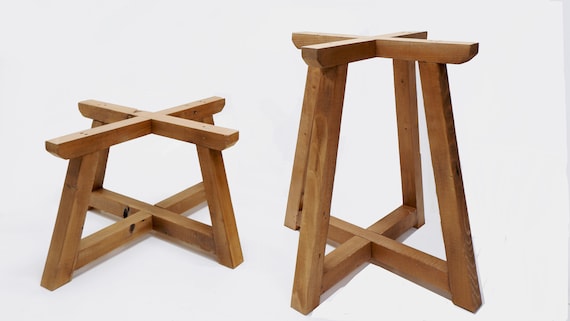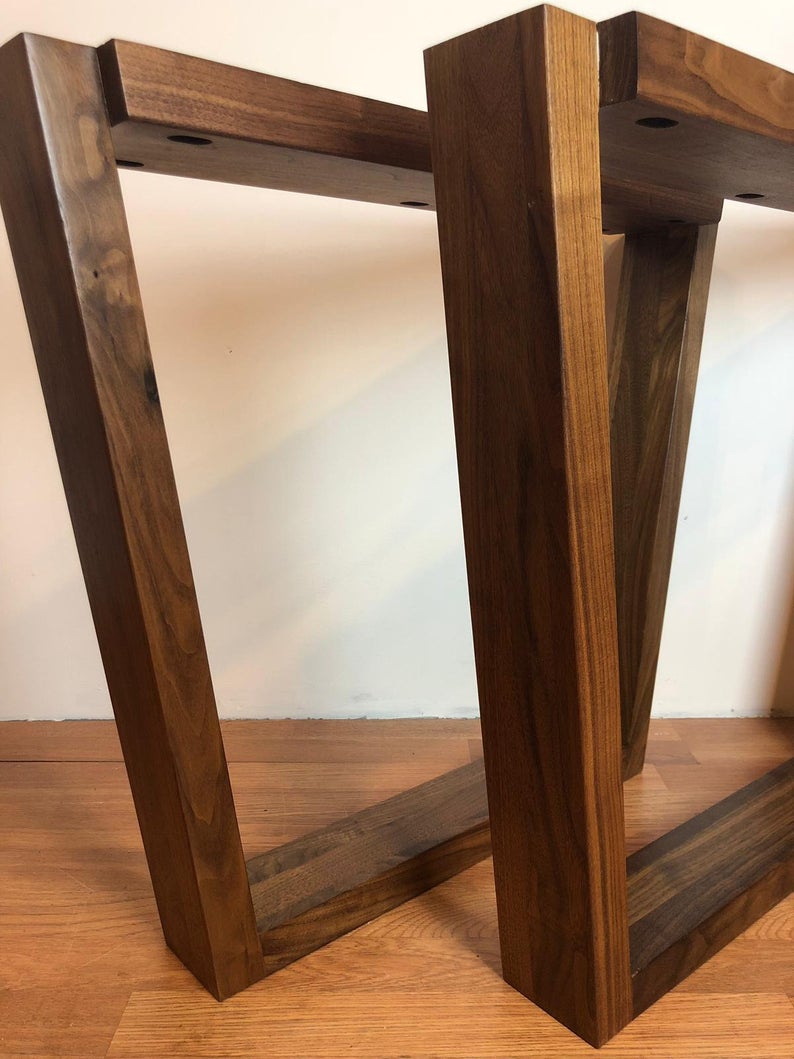Exploring the Different Sorts Of Table Legs Wood for Your Eating Room
The choice of eating table legs timber can profoundly impact both the useful and aesthetic qualities of your eating space. Solid timber choices, such as oak and walnut, provide a classic appearance with unrivaled sturdiness, while crafted timber options provide cutting-edge designs that simulate the richness of all-natural grains.
Strong Wood Options

Unlike engineered products, strong timber is less prone to warping and damage over time when appropriately maintained. Each piece of strong wood is unique, showcasing specific characteristics that add to the appeal and character of the eating table.
Additionally, solid wood can be completed in many means, ranging from natural oils to discolored finishes, enabling home owners to personalize their furniture to match their decoration. In summary, picking strong wood for eating table legs not just makes certain architectural honesty however additionally enhances the visual charm of the eating location, making it a beneficial investment for any kind of home.
Engineered Timber Alternatives

Plywood, built from multiple layers of wood veneer, is stable and especially solid, making it a superb option for dining table legs. Its layered make-up enables it to endure modifications in moisture and temperature level far better than traditional solid timber. MDF, on the various other hand, provides a smooth surface for painting or veneering, enabling designers to accomplish a refined look while maintaining architectural stability.
When picking engineered wood alternatives, it is important to take into consideration the designated usage and wanted aesthetic. These products not only boost the functionality of eating spaces but also permit for greater layout flexibility, ensuring that modern and standard styles can exist together harmoniously.
Reclaimed Timber Features
Recovered timber uses an unique mix of sustainability and personality, making it a progressively preferred choice for eating table legs. Sourced from old barns, factories, and other structures, redeemed wood embodies a background that brand-new products simply can not reproduce. Each piece carries its very own story, marked by distinct flaws, knots, and varying grain patterns, which add to a table's distinct visual allure.
Along with its aesthetic charm, redeemed timber is an eco-friendly option. By repurposing formerly utilized materials, it lowers the demand for brand-new lumber, therefore assisting to conserve forests and reduce waste. This lines up with a growing consumer preference for sustainable practices in furnishings.
Additionally, reclaimed wood is typically a lot more sturdy than recently gathered timber because of its age. The natural drying my sources process that recovered timber goes through cause a denser and stronger material, making it much less vulnerable to bending and splitting. This boosts the longevity of dining tables, enabling them to stand up to the roughness of everyday usage.
Softwood vs. Wood
When picking eating table legs, recognizing the distinctions in between softwood and wood is critical for attaining both visual and useful objectives. They usually display an even more rustic look, making them appropriate for country-style or laid-back eating areas.
On the various other hand, woods, sourced from deciduous trees like cherry, maple, and oak, are renowned for their thickness, stamina, and sturdiness. The detailed grain patterns and abundant hues of woods give a classic visit homepage and advanced appeal, making them perfect for official eating settings. While hardwoods often tend to be extra expensive and larger, their durability versus wear and tear frequently validates the investment.
Eventually, the selection between softwood and wood for dining table legs home should straighten with your layout vision, usage needs, and budget, ensuring that your dining room shows your personal design while continuing to be functional in time.

Therapies and coatings
The aesthetic charm and long life of table legs can be substantially improved through various coatings and treatments. These procedures not only secure the timber from damage yet also elevate its look, permitting it to match diverse indoor styles.
One typical therapy is staining, which passes through the timber and improves its natural grain while including shade. Discolorations provide a rich, classy appearance, making it possible for property owners to match their furniture with existing decoration. Alternatively, clear coatings such as polyurethane or varnish develop a protective layer without modifying the timber's original color, guaranteeing durability versus damage.
In addition, all-natural oils, like tung or linseed oil, nourish the timber and supply a refined shine, all while being eco-friendly. These oils permit the surface to take a breath, protecting against moisture accumulation and potential warping.
For those seeking a rustic beauty, troubled or weather-beaten surfaces can be used to create an aged look, adding personality to the piece. Inevitably, the choice of therapies and coatings relies on personal preference, desired aesthetic appeals, and the details wood kind, making it important to think about these variables when picking eating table legs for your space.
Final Thought
Strong timbers, crafted options, and recovered choices each offer unique benefits, providing to numerous preferences and demands. Eventually, the choice of timber type need to align with wanted style, toughness, and environmental factors to consider, enhancing the overall eating experience.
The option of eating table legs timber can profoundly impact both the functional and aesthetic top qualities of your eating area - Dining Table Legs Wood. Strong wood alternatives, such as oak and walnut, give a classic look with unmatched resilience, while crafted timber alternatives use cutting-edge layouts that simulate the richness of natural grains. Solid timber offers a timeless high quality that can elevate the total design of a dining area. Each item of strong wood is one-of-a-kind, showcasing private attributes that add to the appeal and personality of the dining table
Moreover, recovered wood is typically much more durable than newly collected timber due to its age.